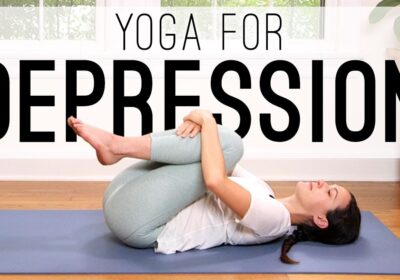Exercise VS Yoga

Summary:
- Components of yoga like pranayama, meditation and kriyas (yogic cleansing practices) make yoga different from exercise. It is the asana component of ashtanga yoga which makes people compare exercise and yoga.
- Repetition and speed are generally at the core of exercise. Yogasana practice focuses on the maintenance of postures for a certain duration. In yoga tradition surya namaskara ( a set of postures done in a dynamic way) is closest to exercise.
- Evidence suggests that yoga intervention for different health conditions are either equal or superior to exercise for most of the outcome measures.
Ashtanga yoga of Patanjali includes yama, niyama, asana, pranayama, pratyahara, dharana, dhyana and samadhi. Though the popularity of yoga is largely due to the popularity of asana, pranayama and meditation. In this also, asana tradition has played the major role to such an extent that yoga is considered similar to exercise and compared with it frequently. Hence, it is only the asana component of yoga which can be compared with exercise.
It is important to remember that all classical yoga texts invariably highlight the importance of yoga for developing better control over modifications of mind and this itself makes yoga very different from the exercise. This also depicts that ancient texts understood the importance of exercise for a good control over mind.
There are some similarities between exercise and yoga that are worth noting:
Improved physical health: Both exercise and yoga can improve physical health and wellbeing. Exercise can help build strength, increase cardiovascular health, and burn calories, while yoga can improve flexibility, balance, and strength along with other benefits which are common to both.
Stress reduction: Both exercise and yoga can help reduce stress and improve mental health. Exercise has been shown to release endorphins, which can improve mood and reduce stress, while yoga breathing and meditation techniques can help calm the mind and reduce anxiety.
Improved sleep: Both exercise and yoga can help improve sleep quality. Exercise can help tire the body out, making it easier to fall asleep, while yoga relaxation and meditation techniques can help calm the mind and improve sleep quality.
Weight management: Both exercise and yoga can be useful for weight management. Exercise can help burn calories and build muscle, while yoga can help in developing better control over food habits along with the benefits posed by exercise.
Improved overall wellbeing: Finally, both exercise and yoga can improve overall wellbeing. By promoting physical health, reducing stress, improving sleep, and promoting a sense of balance, both forms of activity can help individuals feel better overall.
Differences in exercise and yoga
Exercise is a physical activity that is performed with the intention of improving physical fitness, strength, and endurance. It usually involves repetitive movements that are aimed at building muscle, burning calories, and increasing cardiovascular health. Exercise can be done in a variety of ways, including running, cycling, weightlifting, and swimming. It is often seen as a way to improve overall health and fitness, and is an essential part of many people’s daily routine.
Yoga, on the other hand, is a spiritual practice that has been around for thousands of years. It involves a combination of physical postures, breathing exercises, and meditation techniques that are designed to improve overall health and wellbeing. Unlike exercise, yoga is focused on the mind-body connection, and is considered a holistic practice that benefits the body, mind, and spirit.
While both exercise and yoga can improve physical health and wellbeing, there are some key differences between the two that make them unique.
Focus: One of the main differences between exercise and yoga is the focus of the practice. Exercise is primarily focused on physical fitness and improving overall health. It is often used to build strength, increase endurance, and burn calories. Yoga, on the other hand, is focused on the mind-body connection, and is aimed at achieving a sense of balance and inner peace. While yoga can certainly improve physical health, it is primarily designed to improve mental and emotional wellbeing.
Movement: Another key difference between exercise and yoga is the type of movement involved. Exercise typically involves repetitive movements that are designed to build strength and endurance. It can be high-intensity, such as running or weightlifting, or low-intensity, such as walking or swimming. Movement, on the other hand, is not the focus in yoga. Primary focus in yoga is for the posture and movements are essential for getting into posture or to come out of the posture. Though these days yoga postures are practiced in both static or dynamic ways, but often performed in a slow, controlled manner.
Breathing: Breathing is an essential part of both exercise and yoga, but the way it is approached is different. In exercise, breathing is often seen as a way to regulate heart rate and oxygen intake. In yoga, however, breathing is considered an essential part of the practice, and is used to connect the mind and body. Besides, certain postures are achieved with convenience when followed using a specific breathing pattern. Yoga breathing techniques, such as pranayama, are designed to calm the mind, reduce stress, and improve overall well being.
Meditation: Meditation is a key component of yoga, and is often used as a way to calm the mind and improve mental clarity. In exercise, however, meditation is not typically included as part of the practice. While some forms of exercise, such as running or swimming, can be meditative in nature, they are not designed specifically for this purpose.
Philosophy: Finally, yoga has a rich philosophical tradition that is not present in exercise. Yoga philosophy includes concepts such as mindfulness, self-awareness, and the pursuit of inner peace. These concepts are not typically included in exercise, which is more focused on physical health and fitness.
Kriyas, mudras, bandha: These are unique to yoga and not having any equivalents in exercise. All these components are also largely at physical level. Kegel exercise is one similar component in modern exercise which remains largely restricted to therapeutic purposes.
Ethical components: Yama and niyama components are also unique to yoga and find no place in modern exercise. In yoga tradition, these components are generally combined and overlapped to great extent.
In conclusion, while exercise and yoga may seem similar on the surface, they are two distinct forms of physical activity with different goals and approaches. Both can improve physical health and wellbeing, but yoga is a holistic practice that is focused on the mind-body connection, while exercise is focused primarily on physical fitness. Whether you choose to practice exercise, yoga, or both, it is important to find a form of physical activity that works for you and helps you achieve your health and wellness goals.
There is no one answer to the question of which one is better between exercise and yoga, as both forms of physical activity have their own unique benefits and drawbacks. The choice between exercise and yoga largely depends on an individual’s personal preferences, fitness goals, and overall health needs.
If an individual is looking to build strength and endurance, exercise may be a better choice. Exercise can also help individuals to lose weight, improve cardiovascular health, and build muscle mass. However, exercise can be high impact and may put stress on joints and muscles, increasing the risk of injury.
On the other hand, if an individual is looking for a more holistic approach to health and wellbeing, or if they are looking to improve flexibility, balance, and overall body awareness, yoga may be a better choice. Yoga is a low impact activity that can be practiced at any age or fitness level, and it can be a useful tool for stress management and relaxation. However, it may not be as effective for building muscles.
Ultimately, the choice between exercise and yoga depends on an individual’s fitness goals, personal preferences, and overall health needs. It is possible to combine both forms of physical activity to achieve a more balanced approach to health and fitness.
Related Posts

Yoga for Anxiety Disorders
Summary: Yoga can be used as both an add-on treatment and as a monotherapy for…

Yoga for Back pain
Summary: Yoga can be used as both an add-on treatment and as a monotherapy for…

Yoga for Depression
Summary: Yoga can be used as both an add-on treatment and as a monotherapy for…

Leave a Reply